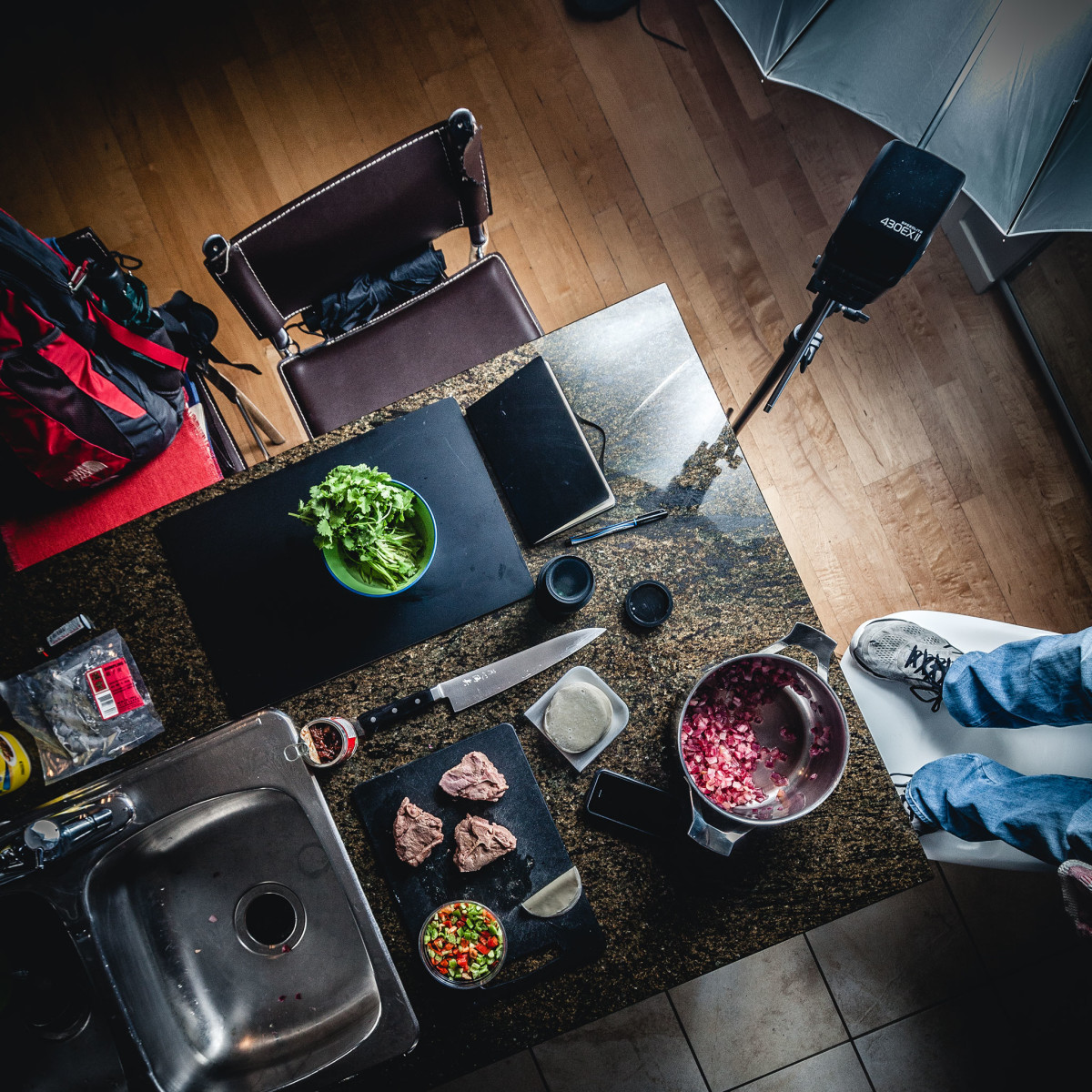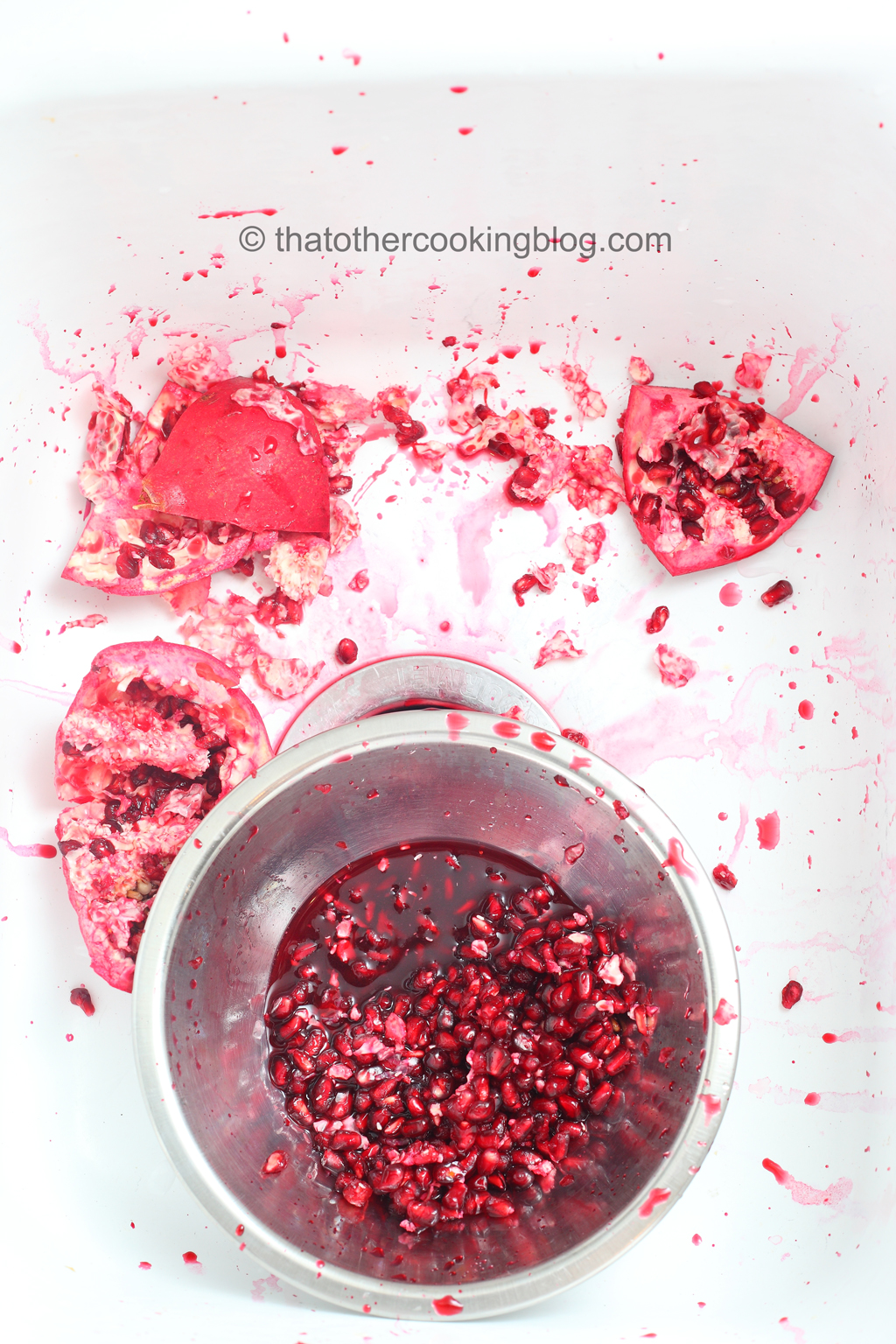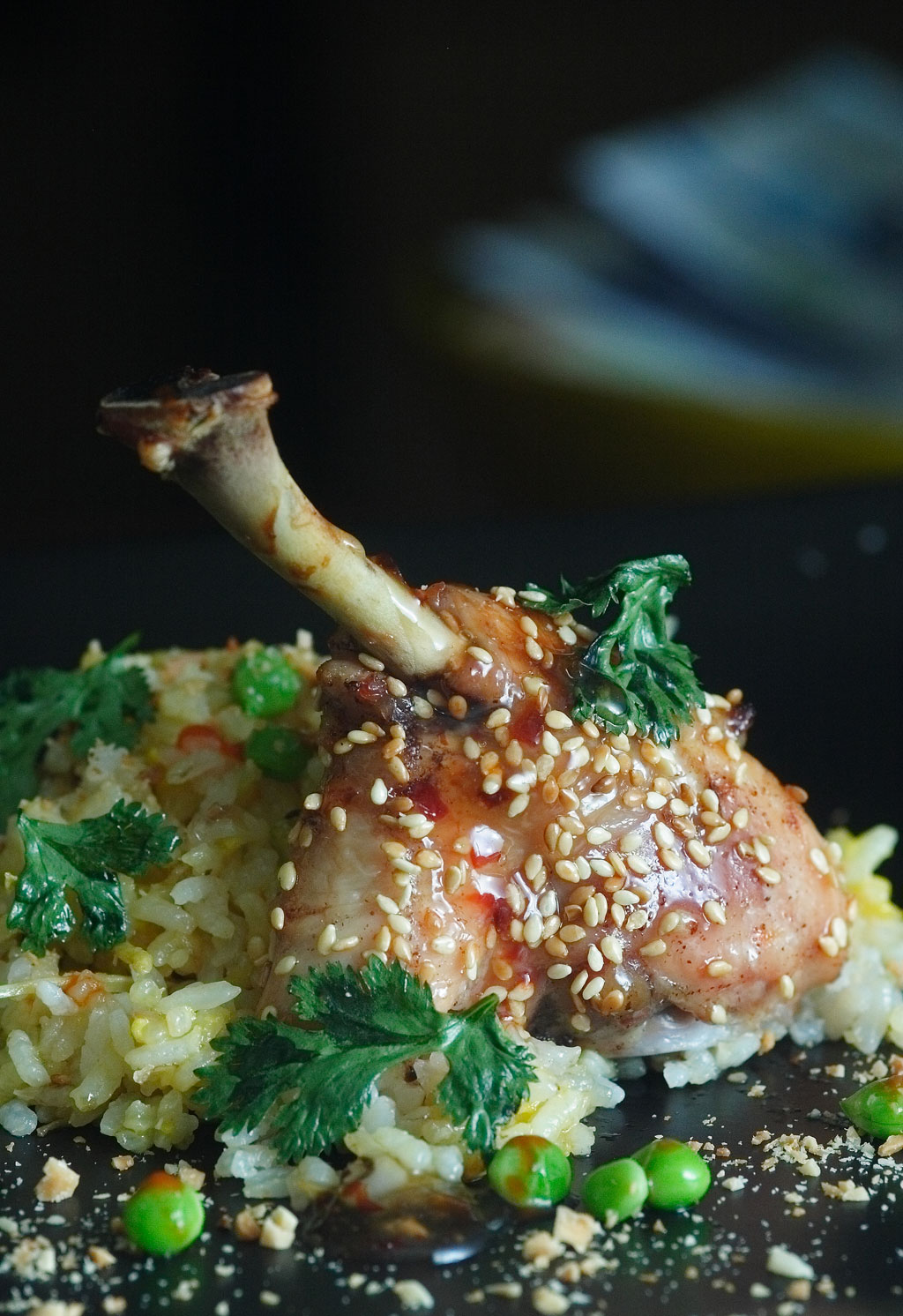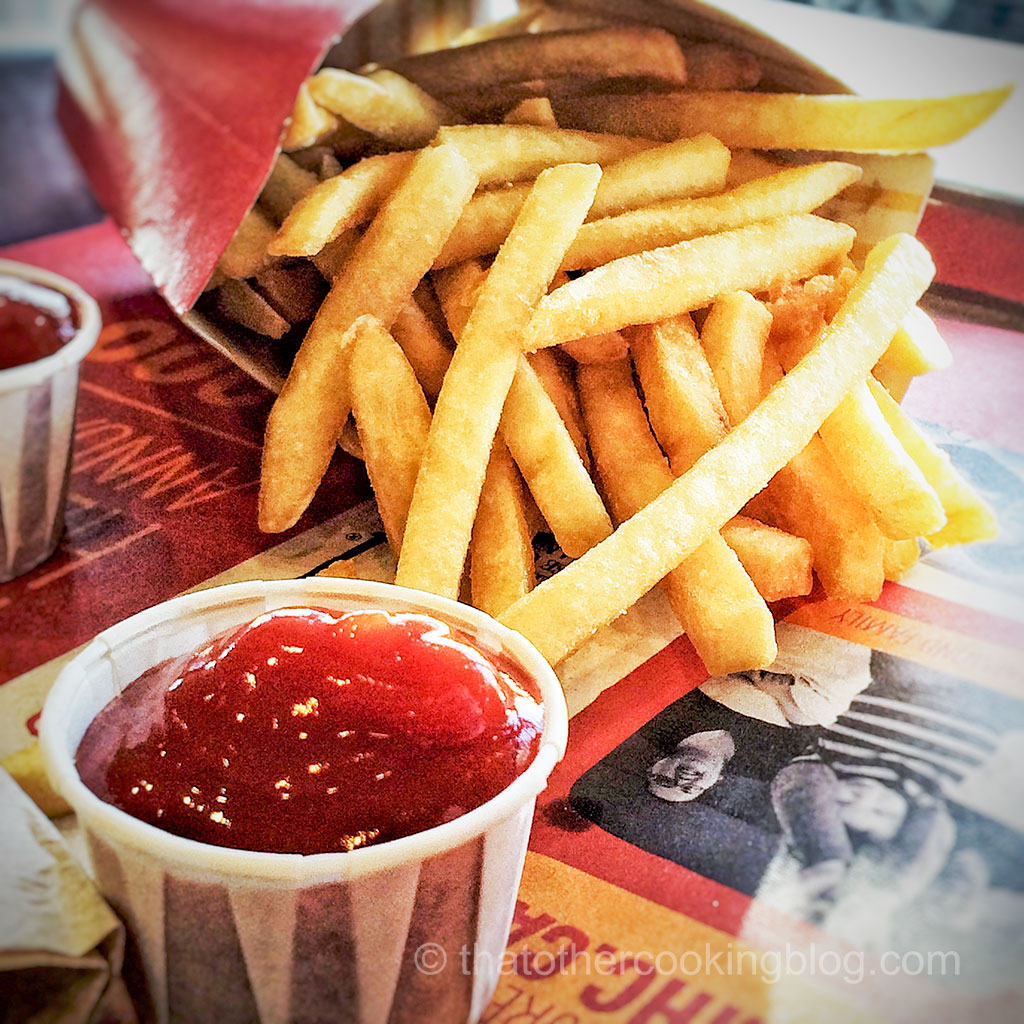Some of you have asked me about food photography and what kind of gear I use to photograph the food on this blog so I’ve taken some time to write a little bit about it here. I love photographing food and sharing what I know. I’ve written about phone photography here and there but it’s not usually what I do. I like that subject because phone cameras are very accessible and really cool. I’m gonna go over what I actually use in the kitchen to take pictures and other equally cool and related stuff.
A little background and context. Photography is one of my many hobbies. I’v been shooting amateur wildlife and landscape photography for some years and over those years I have acquired quite a bit of gear. I won’t recommend specific gear or brands here. This is not and ad post, this post is just about the gear I happen to use and why I use it. With that being said… let’s continue. I switched to digital SLRs in 2005. Bought a canon 20D (which I still own and sometimes use) and took it to New Zealand for a 6 month trip. I also bought a couple of cheap lenses (the camera kit’s ones which were optional) and a some time later I got a little book.

The little book, which is responsible for a lot of what I know today and also responsible for a few significant expenses at the camera store is this one (I adore this book):
A few years later, getting ready for a trip to Costa Rica I finally decided it was time to get a full-frame camera and a couple of better lenses. It’s worth mentioning that the camera body has little to do with the picture quality but with more “serious” cameras, certain controls/wheels/switches/buttons can allow a photographer to be more creative or have more control over the final shot. I decided to buy a canon 5D Mark II. That was like 7 years ago. This is the camera I still use today.

These are some of my lenses, they aren’t professional (L-ring) lenses but they are amazing lenses and can deliver professional quality as far as my untrained eye can tell. I keep a uv filter on them at all time to protect the glass. Always keep a uv filter on your beloved lenses and you won’t have to worry about scratching them. Anyways, here they are:
Canon 50mm 1.8 which is the lens I use the most. Literally 90% of the food on this blog is taken using this relatively cheap lens and a miracle of technology. The sharpness is outstanding. It has a nice DOF range and the beautiful bokeh. Food seems to love this lens. Doesn’t get any better for the price.

Canon 80mm 1.8. This one I use in specific situations where I want a flatter perspective. Seems a bit warmer as well. The image quality is probably as good as that of the previous lens, although this lens isn’t as cheap. It’s a beautiful portrait lens. Outstanding sharpness.

Sigma 105mm EX Macro lens. Ok this one can be a bit pricey and I use it for nature macro photography mainly but sometimes I do macro food photography on the blog. This is the lens responsible for those extreme closeups. I love it. Probably the sharpest lens I own. It isn’t trivial to use but worth it.

I shoot virtually everything using a flash unit in a very dark kitchen. I would love to use the sun light but then I would have to shoot during the day and that’s not a possibility when I have a day job. This is the flash unit I use and adore. The canon speedlite 430ex II. I have this guy attached to a stand and I diffuse the light through a white umbrella. I have a cheap radio trigger setup. I keep a pc cord handy in case the radio trigger runs out of battery. And if all of that fails, I can still mount the flash on my camera, point away from the subject and bounce the light off a white diffuser or card. This is an oversimplification of my flashlight shooting workflow but you get the idea.

Other gear. I own a couple of Gitzo tripods. I also own a BH-55 RRS ball head, one of my most precious possessions. I rarely use any of these for food photography though. Mainly because I shoot with a flash. When I shoot with available light I do use them and if you want to get serious about photography and don’t plan on using a flash. Then get a tripod. I couldn’t stress this enough. You may have the steadiest hand on the planet but if you really want to know what your lens is capable of, shoot on a tripod and compare. I had no idea how sharp even my cheapest lenses were until I started using a tripod religiously. If you are gearing up for flash photography though then save the money for that tripod. The exposure times in flash photography are so fast that unless you’re having a seizure while taking the shot, you won’t be able to get a blurry picture.
Photo editing. I do all my photo editing in Adobe Lightroom. For many years I used Photoshop elements in 2015 I decided to try Lightroom. It definitely improved my post editing workflow and made shooting in RAW format a wonderful experience. I now regret not having switched earlier to Lightroom. When I upload photos to my Instagram account I add another processing step to my workflow and use snapseed on my Iphone. Phone screens have a bit more color depth so I like to push the contrast and saturation a bit when I post to my Instagram account. I can do last minute temperature adjustments too. I keep my laptop screen calibrated too and which I do myself using my colorMunki Display. Takes like 5 minutes and this way I make sure that the color rendition of my screen is as neutral as possible.
Photography is an expensive hobby. It can be extremely expensive but there are options and good compromises. Second hand gear isn’t a terrible idea either. Specially if you buy from a friend. Many camera stores sell second hand gear. Some of my gear is second hand. You can forget about all this gear stuff and shoot using the camera on your cellphone. Those things have gotten pretty damn good lately and I’ve seen and taken some really good pictures with phones but they’re still no replacement for a good lens and a camera that allows you to manually control everything about the shot.
Thoughts on food photography. Let’s start by saying that I eat everything I photograph. I don’t photograph everything I eat though. When I have an idea for a dish that I want to document, I think about how I want my food to look on the plate… I definitely put extra effort in plating when I’m thinking about a blog post. I try avoid overdoing it as much as possible. I don’t have a staff of people helping me and I usually have to do everything myself in every photo session. So, in order to keep the food from spending too long sitting out while I shoot it I have to have everything ready and plate the food keeping things simple and manageable. I hate to admit it but there has been a few times when I tried to come up with more complicated plating ideas… while having to take photos at the same time only to find out that it is impossible to control. Stressful, I lose track of what’s important, I make a ton of mistakes and the end result probably ends up in the trashcan which is an crime and something that goes against what I believe. Nothing should ever go to waste. I hate it when something like that happens. Makes me feel awful.
If you want to get started in food photography. I would suggest starting simple, maybe borrowing a camera from a friend. Don’t invest in gear unless you really really love it and have the time to do it. There are tons of books on photography and food photography but I found over the years and that what’s taught me the most is reaching out to those food bloggers that take beautiful photos and ask them questions. People that are passionate about photography will very likely want to talk about photography all day long. They will talk about gear all day long and about light all night long. They will talk about props and backdrops and dishwater and silverware. They will talk about software. They will talk about lighting setups, etc, etc, etc. So don’t be shy and ask away. Some of them are too busy to get back to you but you will eventually get answers. I asked a bunch of questions and still have so many more to ask!
Light. Ah, yes, light is the single most important thing about photography, you can own the most expensive cameras and lenses in the world but no light, no photo. Crappy light? Crappy photo. Cheers!
Wanna get more sous-vide cooking guides and cool cooking how-to’s in your mailbox? You know what needs to be done!
We never spam. You should only be getting updates when new content is posted on the site. We also respect your privacy. We don’t share your email address with anyone and you can unsubscribe anytime!






4 comments
Fantastic info! Thank you.
thanks Jeff!!!
Great post, Paul. Some good info on here! Always entertained the idea of Food Photography but have been far too busy, about to seriously get into it though!
thanks and good luck with your food photography! I never planned on doing any food photography but after I got into cooking I fell in love with it too.